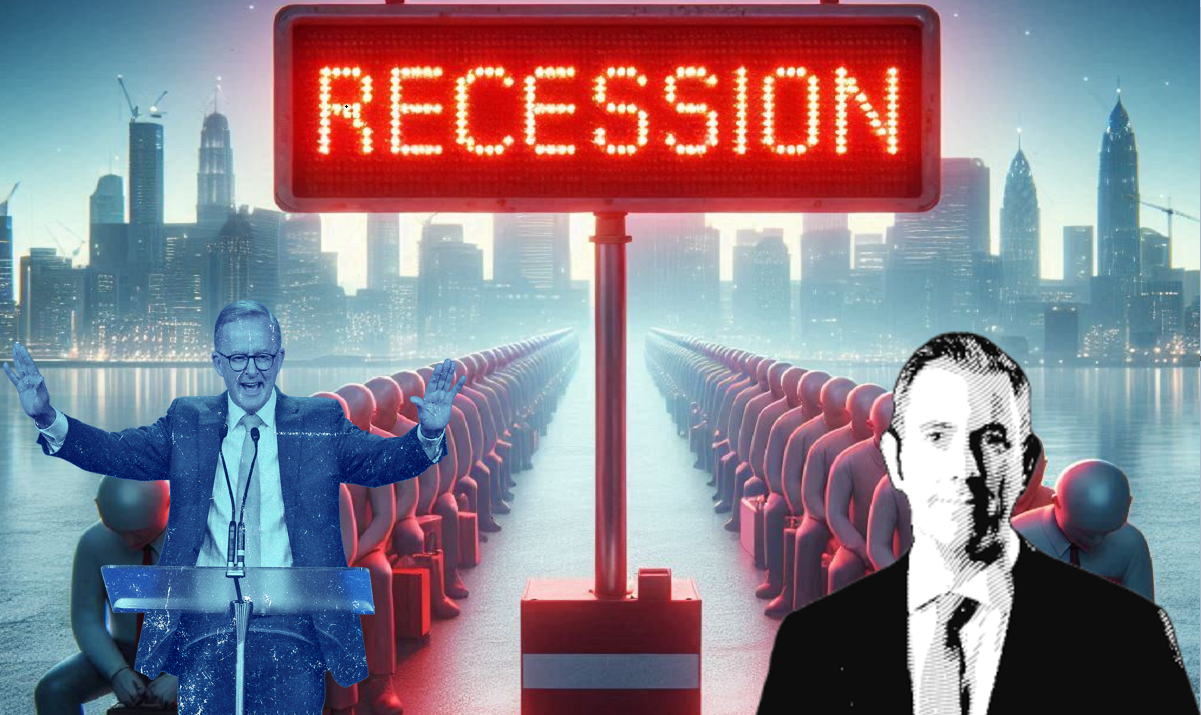The enormous mission to get residents employed in one of Australia’s most remote communities

- by Admin
- August 27, 2024
Ravaged by drug abuse, rampant unemployment and deep social dysfunction, Balgo is one of Australia’s most remote communities.
But there are opportunities on the horizon, as a community with ancient traditions looks to a modern future.
Yellows and greens colour the desert scrub surrounding Balgo, one of Australia’s most remote settlements.
A big wet season has injected life into the landscape.
The ground’s now dry and the weather’s cool, so it’s a good time to be hunting.
From a lone ute, bouncing along a bumpy track, Gideon Brown, Dean Brown and Mick Hickey look for kangaroos.
Gideon and Dean spot one. Mick slows, and the men whistle. The roo pauses. Gideon takes aim with a rifle. The shot pierces the breeze.
Minutes later Gideon cuts back the dead kangaroo’s skin. The Warlpiri man is happy to find plenty of fat.
The rich white layer adds flavour and shows the animal has been gorging on the abundant grasses.
Back in the ute, Gideon and Dean teach Mick, an outsider, about their knowledge of the bush, passed down over thousands of years.
They talk about the animals and plants they like to eat.
“Witchetty grub, goanna, bush tomatoes, and more,” Gideon says.
Loading…
Hunting is a weekly ritual that bonds these men, who work together for Wirrimanu Aboriginal Corporation.
The organisation manages the Aboriginal community in the East Kimberley region, about 1,800 kilometres from Perth and more than three hours’ drive to the nearest service town, Halls Creek.
Gideon and Dean are municipal workers. They do many hands-on jobs, mainly tidying up the community and grading surrounding dirt roads.
This morning they’re helping an older man by repairing his punctured tyre.
Gideon speaks multiple Indigenous languages, communicating in Kukatja to his friend Dean.
The 40-year-old’s English is spare and to the point.
He says his job makes him proud.
“This thing changed my life. Supporting my family. I feel good,” he says.
Dean feels the same, but he’s happy to elaborate on something Gideon’s shy about.
This workshop isn’t just where men work, it’s also where they’ve made peace.
Fighting and feuding is a huge problem in Balgo, but locals say in the past year the situation has improved.
This crew says opponents in these long-running disputes, who once refused to work together, are now happy colleagues in this workshop.
Dean says work helps people like him deal with the tough aspects of life.
“You forget everything from doing things before, like fighting,” he says.
“If you work everything will change. It will make you leave that thing. I will just do my job.”
Mick Hickey is the community’s co-CEO and says he’s strived to build the municipal crew into a success.
His mantra is to make work interesting, give people responsibility, and importantly, bond off the clock.
“I go out hunting with the guys one afternoon a week. It’s just being different,” he says.
“I think the secret is not doing the same thing all the time. We might be building a trailer one week and the following week we might be fencing.”
He’s proud to see municipal workers take an active role in quelling the violence.
“These guys ended up, when the fighting would start, they were actually out there trying to stop the fighting from each different camp,” he says.
“It was really, really good.”
Loading…
Leaders say getting young people into work and onto a better path is one of the key challenges in Balgo, where social issues are manifest.
The Indigenous people here were some of the last in Australia to encounter western society throughout the mid-20th century.
This means Balgo has a reputation as being one of northern WA’s most culturally rich communities, but adapting to modern ways, in particular government bureaucracies, hasn’t come easy.
Residents and leaders say overcrowded and substandard housing is a huge problem, which feeds into a generational cycle of poverty, youth crime, substance abuse and welfare dependency.
Indigenous people make up about 90 per cent of the population, thought to be somewhere between 400 and 600 people in the transient hub, roughly where the Great Sandy and Tanami Deserts meet.
But outsiders dominate skilled jobs. The unemployment rate for Aboriginal people is 66 per cent, compared to 12 per cent Australia-wide.
And there’s community concern that figure, from the 2021 Australian census, may not capture the full scale of the jobless crisis.
Call for jobs
Community advocate Dulcie Nanala despairs about the lack of people in work.
She’s seen the impacts of petrol sniffing in Balgo, but says now the most widespread and damaging substance is cannabis or ‘ganja’.
The well-known artist observes too many people abusing substances and says they lack the confidence and will to look for a job.
“They’re spending all their money on ganja instead of finding a new job. And we’re old people. They give us stress,” the Kukatja woman says.
“We tell them to find a job and earn some money for themselves and their families, but they won’t, they’re too shy.”
Dulcie’s friend Tossie Baadjo remembers living in a traditional way as a young girl and thinking white people were ghosts the first time she saw them.
“I went to school. They told me about the work. And I said I want to be a healthcare worker. And true, I was working as a health worker,” she says.
She wants to see Aboriginal people flourishing in key positions within the community.
“Work at the shop, or art centre or school, and people to train to be a police-lady or a police-man.”
Federal plan
The federal government shares that aim, and in the next few months will start rolling out a new strategy to get more Aboriginal people in remote communities into work.
The $700 million Remote Jobs and Economic Development program is the latest in a long line of Commonwealth initiatives to get people off unemployment benefits, while building economic opportunities.
The government says it will initially aim to create 3,000 jobs over three years, that are meaningful and what communities want.
But while leaders and workers say the government’s goals sound promising, they are quick to urge caution.
They point to examples of positions becoming available but locals either not taking them up, or lasting the distance.
Despite scepticism from some, community director Daniel Rockman says the new remote jobs program is an exciting opportunity.
The local leader uses pictures to explain his ideas.
The Warlpiri man draws a circle on a piece of paper, with different shapes to represent local Indigenous people on one side and government officials on the other.
He says the circle is where the two sides must meet, share ideas and ‘pull together as one’.
“We need to fill the blank up. What ideas they have and this mob has ideas,” he says.
“The gap represents every brick that’s fallen down. We need to build it up again.”
The senior leader says young people in Balgo have enormous potential.
“Don’t look at them in the flesh, look at them with the heart,” he says.
“They can come out of ganja and say ‘nah I’m good at this — this is what my old people taught me’.”
Work gives purpose
One man who lives by the lessons of his elders is Clifford Sunfly.
The Ngururrpa Ranger cares for the surrounding Kukatja country. He especially loves tracking one of Australia’s most mysterious birds, the night parrot.
While he prepares for his latest bush trip, he recalls advice from older relatives which has shaped his ethos.
“If you want something you’ve got to work for it,” he says.
“Leaving school, being a teenager, I tried everything, all the work that I could find.”
The Kukatja man says he shares his wage with family members, but also encourages them to find similar jobs to his own.
“Sometimes I want to get families out so they can get their own money and make their own work,” he says.
“They’ve got to understand if you do the work you get the rewards.”
At the community’s recreation centre, Danita Stretch’s work gives her a strong sense of purpose — to be a role model for the next generation.
“I love my job because I’m proud of what I’m doing here,” she says.
This afternoon she helps a group of children paint over graffiti to make the area look nice ahead of a large funeral.
She tries as much as possible to teach them practical life skills.
“Showing them an example or what to be and what to become when they grow up.”
“When they go home, a lot of stories come back from their parents, ‘my child started cooking’.”
Community leaders say the program needs more funding, while more broadly the Federal Government has talked up the creation of youth worker roles, especially given concerns about teenage crime in remote areas.
The Jaru woman says some days she feels overwhelmed and would love to see more young people from the community by her side.
“Doing different things every day. It’s a challenge. It’s a good thing,” she says.
Road to recovery
About three hour’s drive away a major construction project is slowly making its way towards Balgo, the sealing of the Tanami Road.
Loading…
Keith Njamme is among seven men from the community who have visited the worksite for an orientation day.
They’re competing for two jobs as roller drivers. The positions are two weeks on and one week off.
The 31-year-old is unemployed and insists he isn’t daunted by the long journey to the work camp.
The Kukatja man says his dream is to drive heavy machines and be a positive example to other young people in his community.
“It’ll help me start a new life and provide money for my family,” he says.
“Tell others that it’s not too late to do something in your life. I always talk to some young fellas in Balgo. Encourage them to do good things.”
He’s being supported by regional Indigenous non-profit employment agency Job Pathways and Carmen Murdock, who’s Main Roads’s community and stakeholder manager for the project.
The Aboriginal woman from the Pilbara gives the men advice about how to seek time off work for big family events, such as funerals, and ways to manage the ever-present issue of ‘humbug’,when a cultural obligation to share money with relatives gets out of hand.
Those with an income are pressured and harassed until they’re left with nothing to build a future for themselves.
“We talk about perhaps having a few different bank accounts so they can still have that family obligation, but also keeping some of that money back for themselves,” Ms Murdock says.
“So they can save up, maybe get a car.”
Employment targets have seen the project in its first two years reach 50 per cent Aboriginal participation.
One person from Balgo has been employed so far, but Carmen hopes that number will increase as the work camp moves closer to the community during the next eight years, and efforts to train and recruit residents continue.
“Keith is definitely one of those guys, who once you give them an opportunity you will see them flourish and grow … just by being on site, being around other men who work,” she says.
Old meets new
Leaders say the sealing of the Tanami Road, and the boost to tourism, agriculture and mining it’s predicted to bring in the coming decades, creates opportunities for Balgo.
But elders believe success in the future should not come at the expense of disconnection from the past.
They say traditions, customs and languages are what gives people in Balgo their sense of identity and inner strength.
For Gideon Brown, it’s the old ways which give him peace and purpose.
Loading…
He prefers to cook kangaroo using a traditional method his uncle taught him.
The Warlpiri man removes the intestines and stomach but leaves other organs alone.
He then uses a sharpened stick and string-like innards to stitch its belly up, so when it cooks under coals, a healthy soup brews inside.
“Good bush tucker,” he says.
He carefully pushes a hole in the kangaroo’s hide and pauses.
“I don’t want to lose my culture, doing other things. This is traditional.”
Like many in Balgo, he remains grounded in ancient ways with an eye to the ever-changing new world.
Loading…
Credits
- Words, pictures and video: Ted O’Connor
- Production: Greig Johnston
The Latest News
-
December 23, 2024Australian tennis star Purcell takes on voluntary provisional suspension for breaking anti-doping rules
-
December 23, 2024‘Back myself and be fearless’: Konstas lives by mantra in first hit | cricket.com.au
-
December 23, 2024Wimbledon champion accepts ban for anti-doping breach just months after winning US Open
-
December 23, 2024Australian tennis star Purcell takes voluntary suspension over anti-doping breach
-
December 23, 2024Max Purcell to miss Australian Open after accepting ban for anti-doping breach





